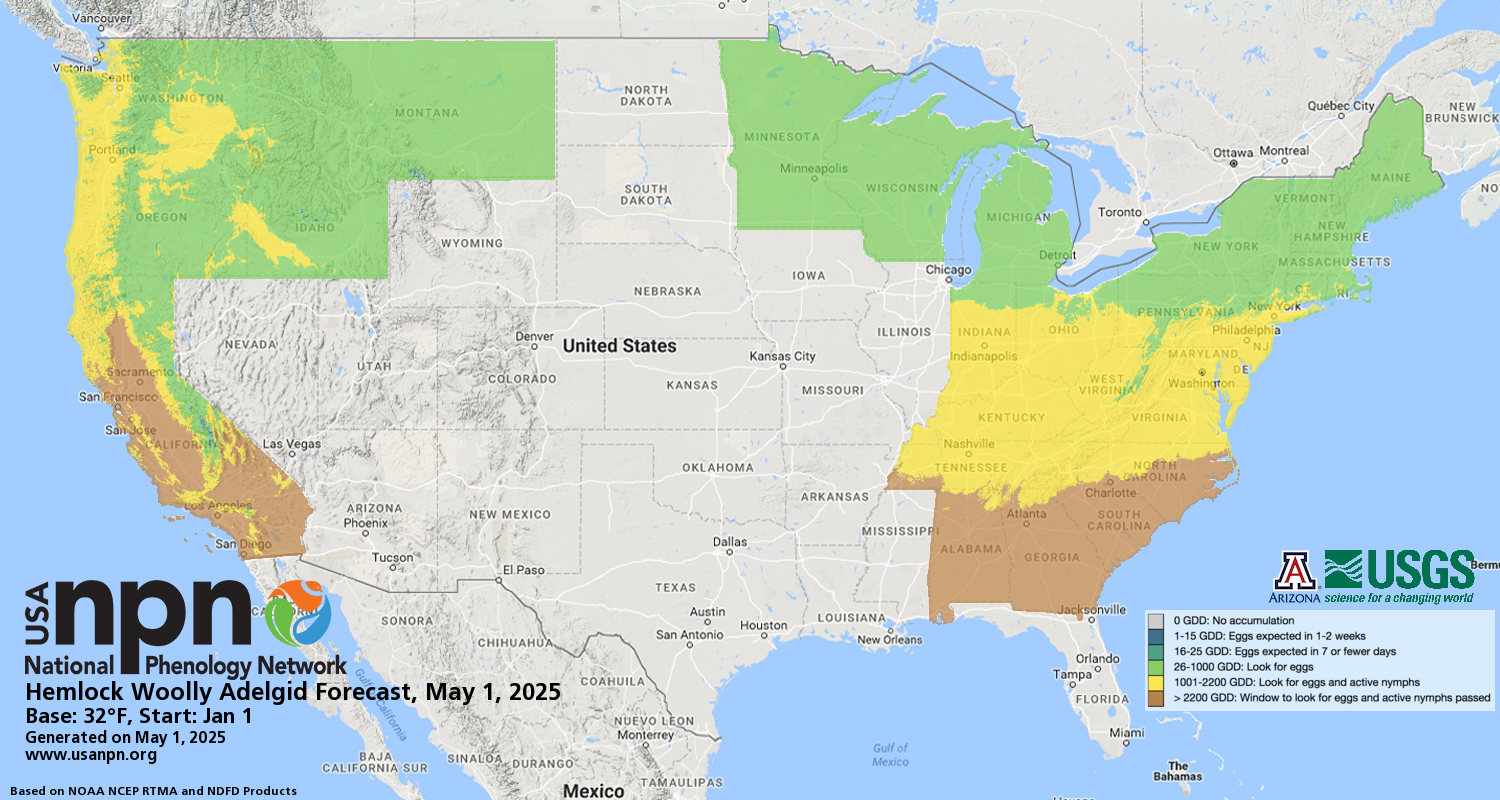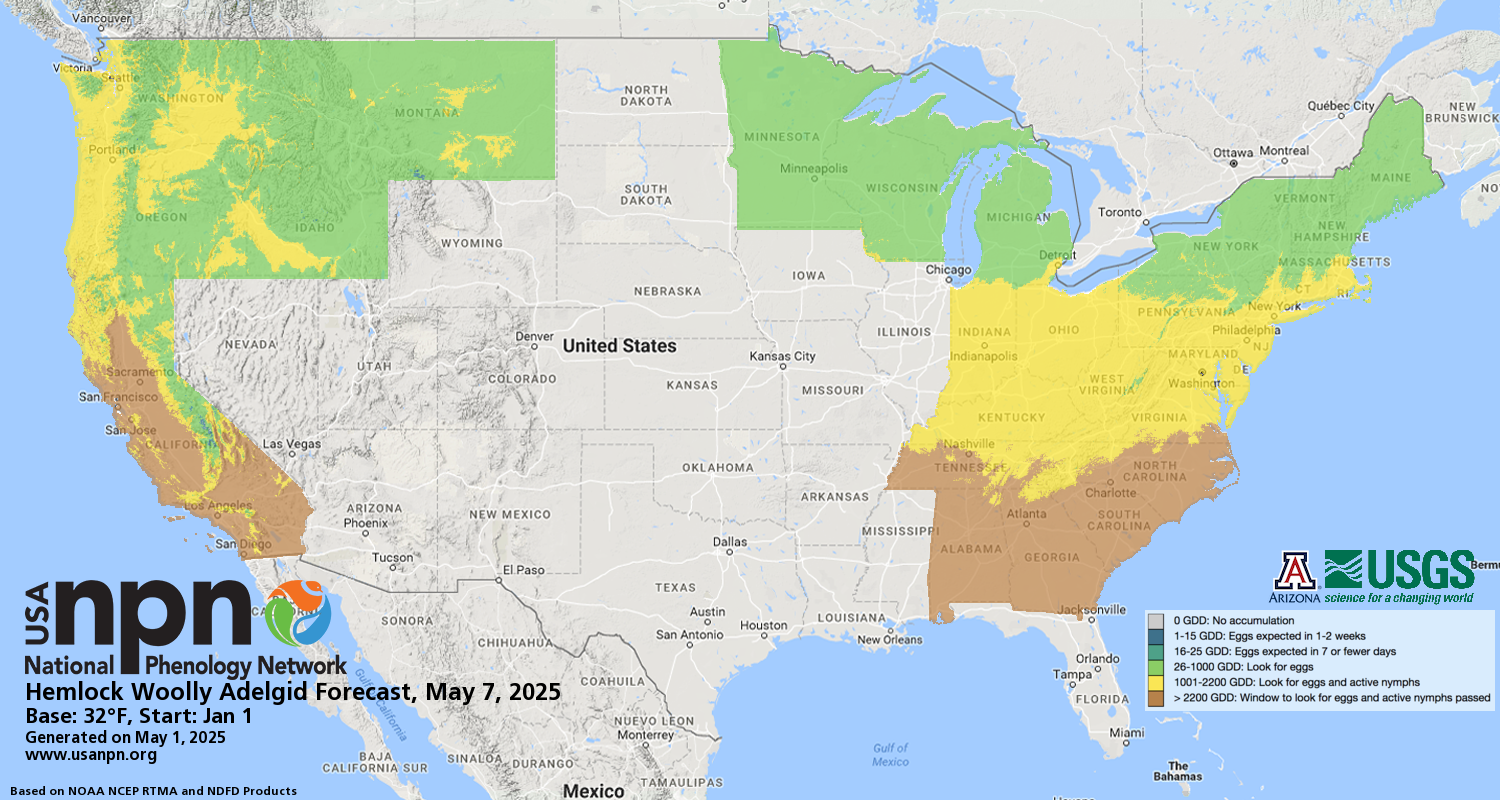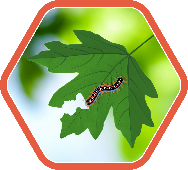Due to technical difficulties, this Pheno Forecast is not currently being updated for 2025. Please check back next year for updated map status.
Hemlock woolly adelgid can be deadly to hemlock trees and, in the eastern United States, lacks enemies that keep their populations in check. Researchers wish to identify the optimal window to release insect predators; you can support this effort by observing hemlock woolly adelgid life cycle stages using Nature’s Notebook.
WHAT ARE PHENO FORECASTS?
Pheno Forecast maps predict key life cycle stages in invasive and pest species, to improve management efficacy. For insect pest species, Pheno Forecasts are based on published growing degree day (GDD) thresholds for key points in species life cycles. These key points typically represent life cycle stages when management actions are most effective. These maps are updated daily and available 6 days in the future.
Help us improve these maps! Our Pheno Forecast map products are still in development, and we seek input on their performance in your area. Give your feedback at the bottom of the page.
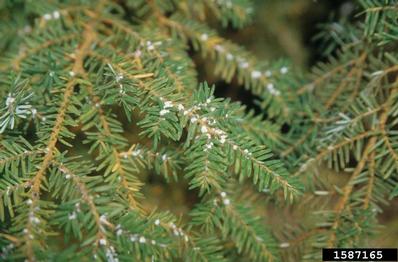
SPECIES BACKGROUND
Hemlock woolly adelgid (Adelges tsugae) damages hemlock trees by piercing the twig at the base of the needles and sucking sap from the trees. Native to East Asia, it now occurs in forests in the eastern US as well as in the Pacific Northwest. In the Northwest, it is kept in check by natural predators; in the east, where predators are few, this pest is causing major damage to hemlock forests. Researchers are working to identify the best time of year to release predator insects or biocontrols, that would limit the rapid spread and damage of the hemlock woolly adelgid.
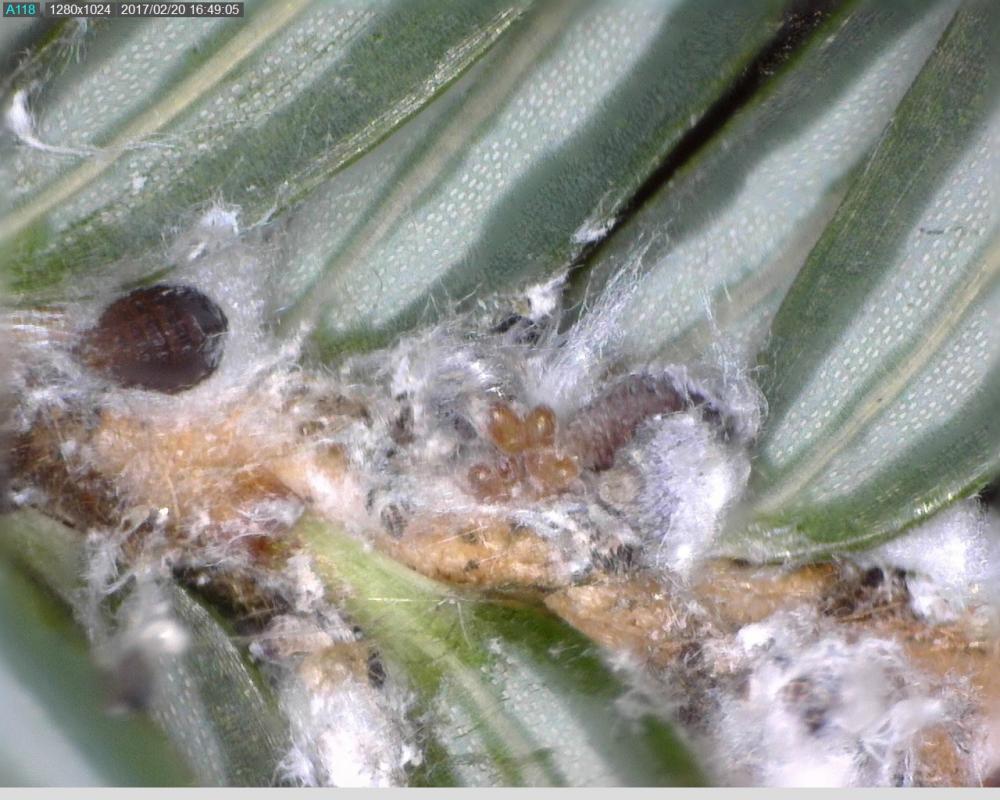
EGG AND NYMPH FORECAST
We forecast the timeframe to look for eggs and nymphs based on growing degree days. For specific information on preferred treatment options in your region, we recommend contacting your local extension agent.
EXPLORE THIS FORECAST
Learn more about this forecast using our visualization tool!
|
Phenophase |
GDD threshold |
Base temp |
Start date |
GDD method |
Model origin |
Source |
|---|---|---|---|---|---|---|
|
Eggs |
26-1000oF |
32oF |
Jan 1 |
Simple average |
NY |
Cornell University |
| Nymphs | 1001-2200oF | 32oF | Jan 1 | Simple average | NY | Cornell University |
More information on map development and re-use policy.
